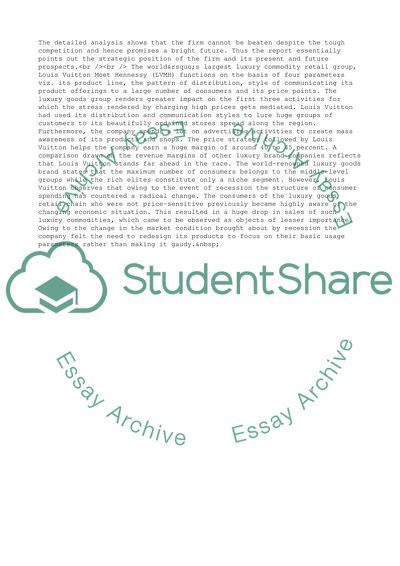Cite this document
(The Position of Louis Vuitton Moel Hennessywith Respect to Its Case Study, n.d.)
The Position of Louis Vuitton Moel Hennessywith Respect to Its Case Study. Retrieved from https://studentshare.org/business/1574864-case-study-report-lvmh
The Position of Louis Vuitton Moel Hennessywith Respect to Its Case Study. Retrieved from https://studentshare.org/business/1574864-case-study-report-lvmh
(The Position of Louis Vuitton Moel Hennessywith Respect to Its Case Study)
The Position of Louis Vuitton Moel Hennessywith Respect to Its Case Study. https://studentshare.org/business/1574864-case-study-report-lvmh.
The Position of Louis Vuitton Moel Hennessywith Respect to Its Case Study. https://studentshare.org/business/1574864-case-study-report-lvmh.
“The Position of Louis Vuitton Moel Hennessywith Respect to Its Case Study”, n.d. https://studentshare.org/business/1574864-case-study-report-lvmh.


